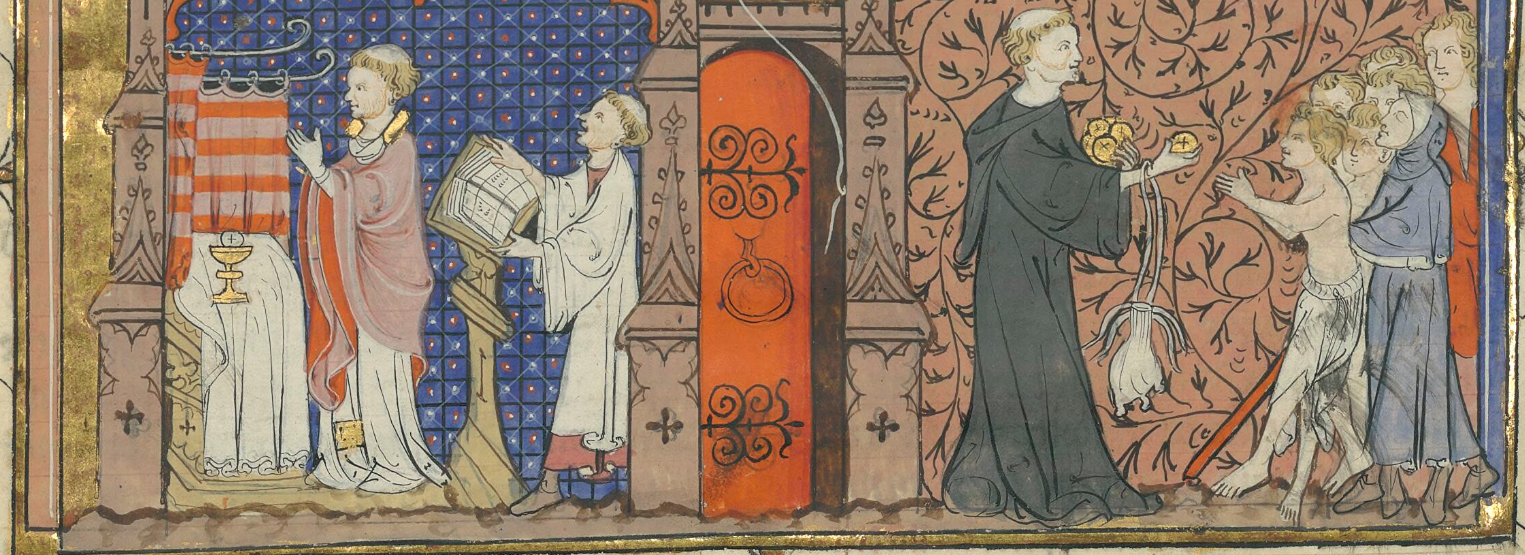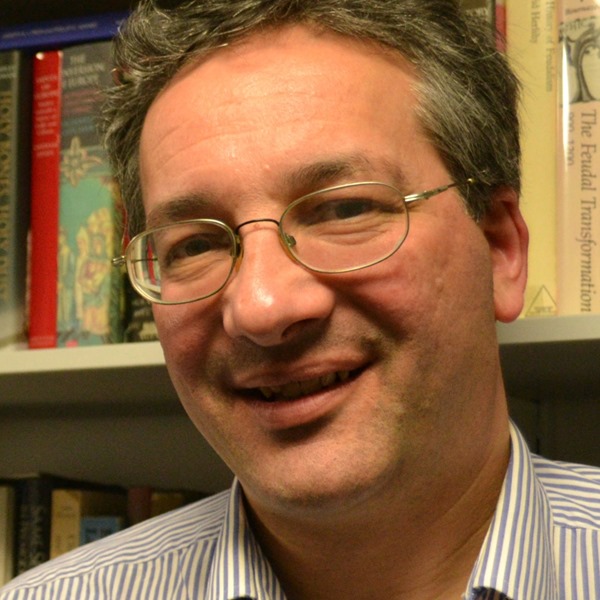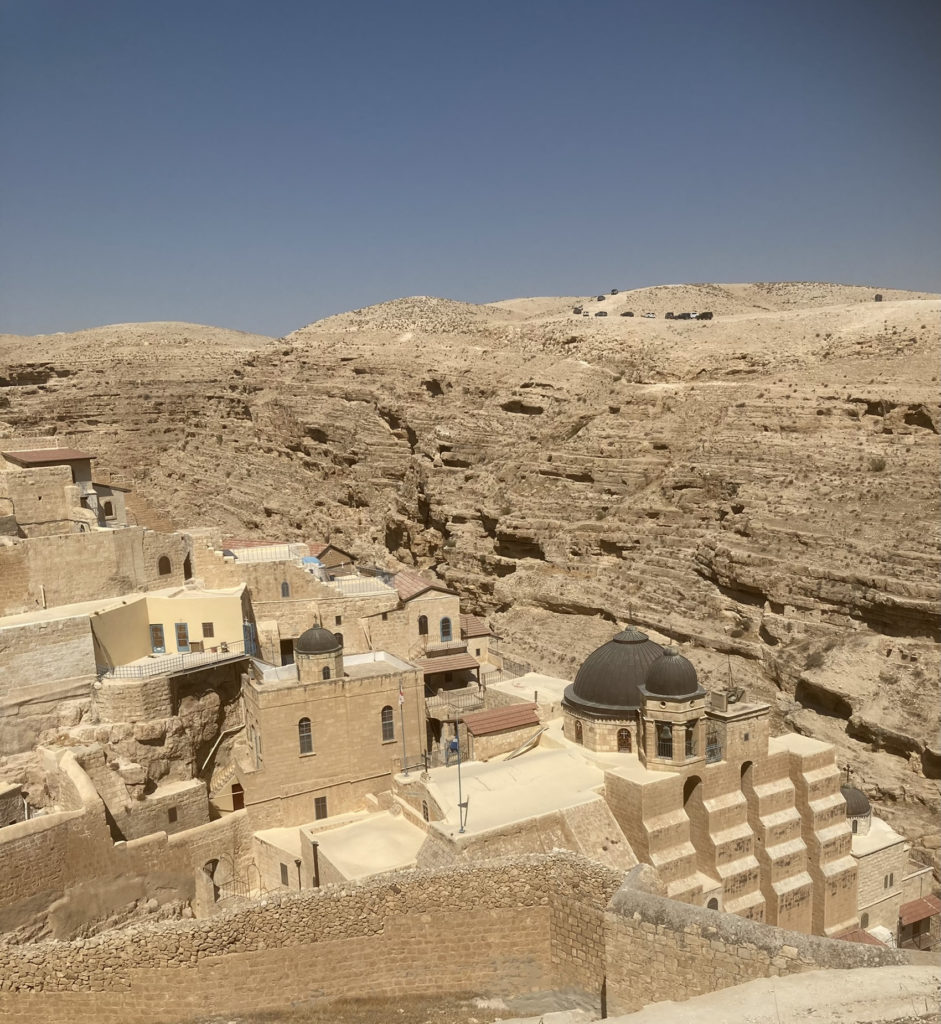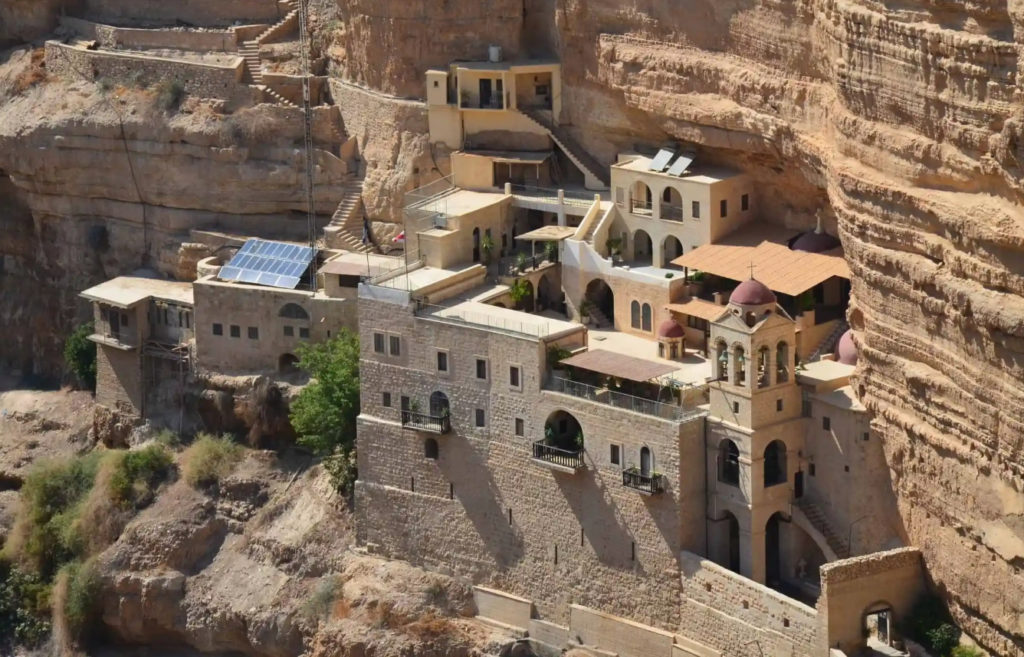
Posted by Edward Mills
24 November 2025
The Simon Barton Lecture is one of two named lectures that take place annually at the Centre. Organised in memory of Simon Barton, the much-missed former Director of the Centre and specialist in medieval Spain and medieval interfaith relations, this named lecture series hosts specialists in subjects that were central to Simon’s work. This year’s lecture is taking place on Wednesday 3rd December, both in-person and online (with registration via Eventbrite), and all are warmly invited to attend. This year’s speaker, Dr. Andrew Jotischky, is a specialist in the eastern Mediterranean; he is the author of ‘A Hermit’s Cookbook: Monks, Food and Fasting in the Middle Ages‘ (2011) and, most recently, ‘The Monastic World: A 1,200-Year History‘ (2024). Continuing a tradition on this blog, Andrew sat down to answer a few questions about his upcoming talk.
I align with Simon’s work really in relation to his interest in the interaction between Christian and Islamic societies in medieval Spain. His book on Interfaith relations and social power (Conquerors, Brides and Concubine) is very important as an exploration of how medieval societies negotiated difference in the context of marriage and miscegenation. This is also an important theme in understanding the social frameworks of the kingdom of Jerusalem in the twelfth and thirteenth centuries, although I imagine Simon would have been particularly interested in the ‘grazing monk’ from eleventh-century Navarre who features in my talk.


The topic has been revolving around in my head for many years but I have only started to think more systematically about it recently. Anyone interested in ascetic religious practices will have to think about food: specifically eating (or withholding food and drink) as part of both the training of the body and as display and the exercise of authority. I’ve been interested in how the practices of asceticism among desert fathers and mothers, which are well known from the ‘classic’ texts about early monasticism, were received and imitated in the medieval period. My specific topic is the practice of ‘grazing’, as attested in some early monastic sources, and how that practice may have survived or been revived in the medieval West. ‘Grazing’ meant reliance on food that was not cultivated but that could be foraged or picked naturally, and included a variety of roots, herbs, grasses, fruit and so on. The wider point here is the degree to which medieval ascetic practices were an imitation of earlier ‘golden age’ monasticism, and how influential such texts were in shaping later practice.
I am very much interested in the relationship between the ‘reality’ of ascetic eating practices and ideal representation in texts. What were the plausible limits of such near-starvation practices? When we read about a hermit living in the woods and surviving off roots and wild grasses, how seriously (or literally) should we as readers take that, and how did contemporaries understand it? Hearing and reading the work of John Wortley on the boschoi (grazers) of the eastern Mediterranean between the fourth and seventh centuries made me think more deeply about [a] the literal reality of ‘grazing’ (i.e. surviving off foraged food) as a practice, [b] whether this is something we see in medieval western monasticism as well, and [c] the relationship between that kind of ascetic ideal and normative practices in rural communities living on subsistence margins, or during a period of harvest failure, and so on. And of course there’s the whole dimension of current vogues for foraging and foraged food such as wild garlic, samphire and so on.
I’m aware that what I’m attempting here is risky, but the question of continuity vs revival is crucial to this enquiry. The problem I’m trying to resolve rests on the question of whether a monk in, say, twelfth-century France was conscious of what monks in fifth-century Egypt or Syria were supposed to have been doing. I hope the audience will be tolerant of a ‘broad sweep’ approach!
The 2025 Simon Barton Lecture will take place at 6pm on Wednesday 3rd December 2025, in Room A128, Amory Building. No booking is required for in-person attendance; if you’d like to attend online, please visit the dedicate Eventbrite page. Feature image: the early hermit, St. Anthony, distributing bread. (Paris, Bibliothèque de l’Arsenal, Ms-5080 réserve, fol. 314v)